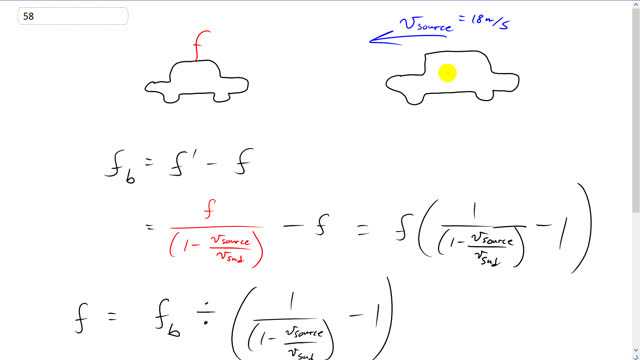
Two automobiles are equipped with the same single-frequency horn. When one is at rest and the other is moving toward the first at 18 m/s, the driver at rest hears a beat frequency of 4.5 Hz. What is the frequency the horns emit? Assume .

In order to watch this solution you need to have a subscription.
This is Giancoli Answers with Mr. Dychko. So, we have a car that stationary blowing horn at some frequency, f. And then a car moving towards it is blowing its horn and emitting the same frequency f, but that'll be perceived by the person at rest as having a different frequency, f prime, which is the frequency that a stationary observer perceives with a sound source moving towards them. So, now the beat frequency with the difference between the two frequencies of the person in this car perceives, one is f prime resulting from this moving car, and the other one is the frequency of their own horn with which they're at rest with respect to. So, we'll substitute for f prime. This is the frequency observed by stationary observer with the sound source moving towards them, that's going to be the frequency emitted by the horn divided by 1 minus the speed of the source divided by speed of sound minus f, we can factor out that f. And then we can solve for f by dividing both sides by this bracket here. So, one side has beat frequency on it and the other side has this. And divide both sides by that bracket and you have the frequency of the horn is the beat frequency divided by 1 minus v source over v sound minus 1. So, that's 4.5 hertz beat frequency divided by 1 over 1 minus 18 meter per second divided by 343 meters per second minus 1. And that gives about 81 hertz.